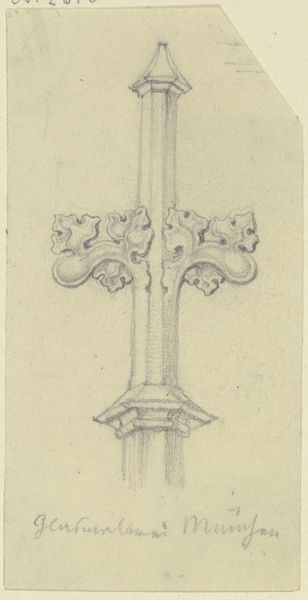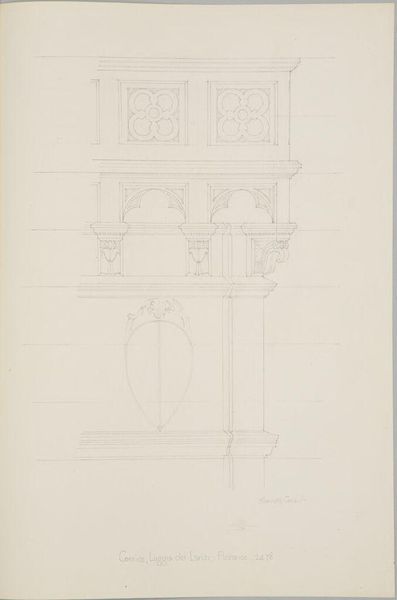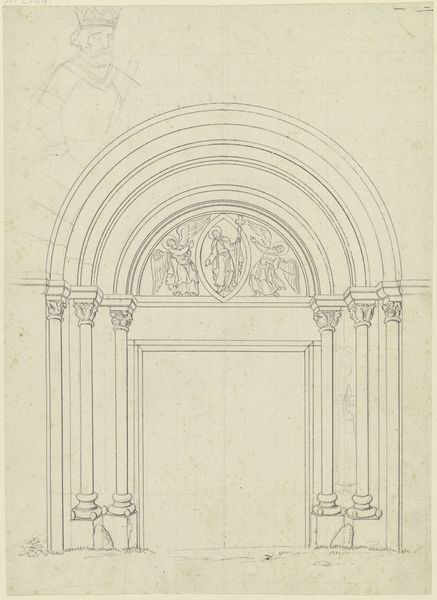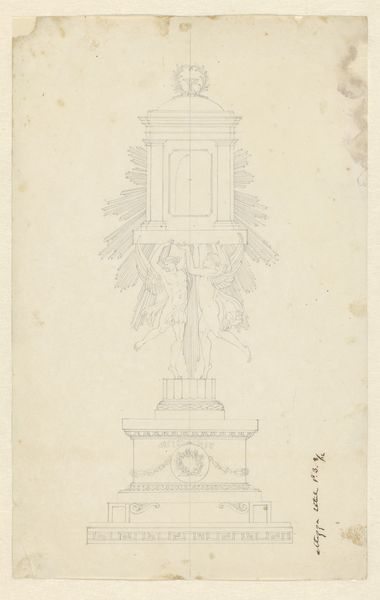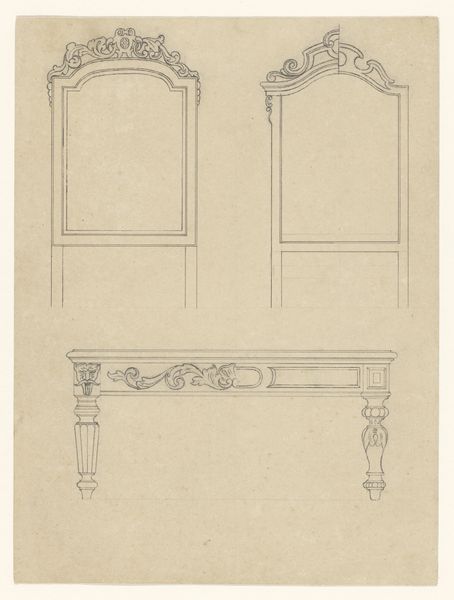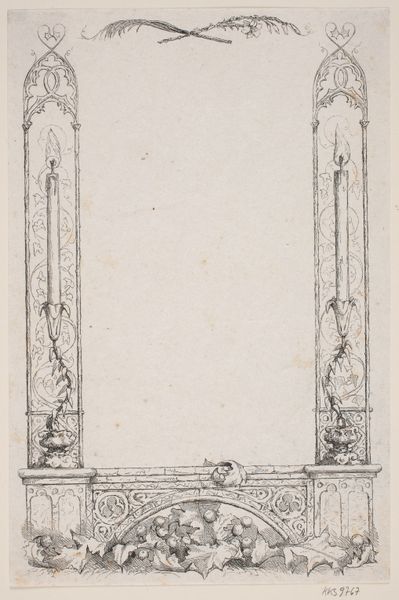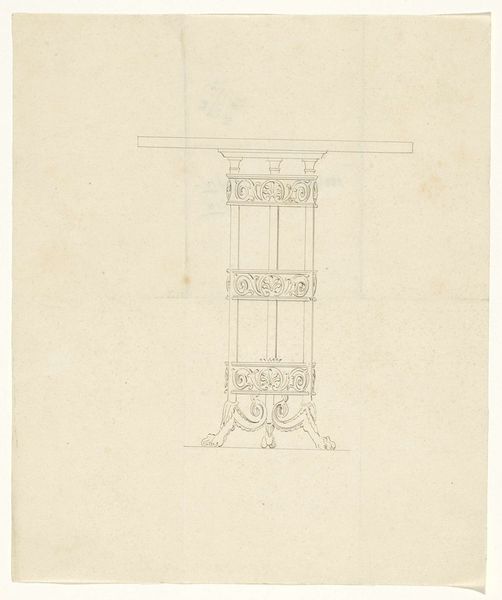
drawing, pencil
#
drawing
#
form
#
pencil
#
architectural drawing
#
line
#
academic-art
#
realism
Dimensions: 133 mm (height) x 114 mm (width) (bladmaal)
Editor: This is a drawing from the 1840s, "Studie af et udskåret bord, set fra siden," or "Study of a carved table, seen from the side," by Martinus Rørbye, created in pencil. It's delicate, almost ephemeral in its lightness. I wonder about its purpose, beyond being a study. How do you interpret this work? Curator: Rørbye captures not just a table, but a relic pregnant with cultural memory. Look at the deliberate repetition of the curvilinear forms. Scrolls echo from the base to the table top, evoking a sense of continuous unfolding, perhaps alluding to evolving styles of the period? Editor: That's a really interesting observation. So, these forms aren’t just decorative? Curator: Ornamentation in the 1840s, particularly this almost neo-classical style, would signify order and taste, projecting power, reflecting the cultural values being built on centuries of tradition. What emotional impression does it leave on you? Editor: It makes me think about domesticity. The detail is incredibly intimate, I hadn't thought of the social significance so overtly, more a kind of refined aesthetic. Curator: Precisely! Rørbye, through careful draughtsmanship, provides a window into understanding how people wanted to portray their lives and ideals. Tables in this era functioned as central points for the display of status and refined aesthetic sensibility within the domestic sphere, carefully sculpted and curated objects, imbued with an elevated position in the world. Do you see hints of social identity encoded? Editor: I think so. Now I understand it differently. It's like decoding a visual language of status. Curator: Yes, art opens doors to cultural memory. Editor: Absolutely, I will look at these drawings differently from now on.
Comments
No comments
Be the first to comment and join the conversation on the ultimate creative platform.
